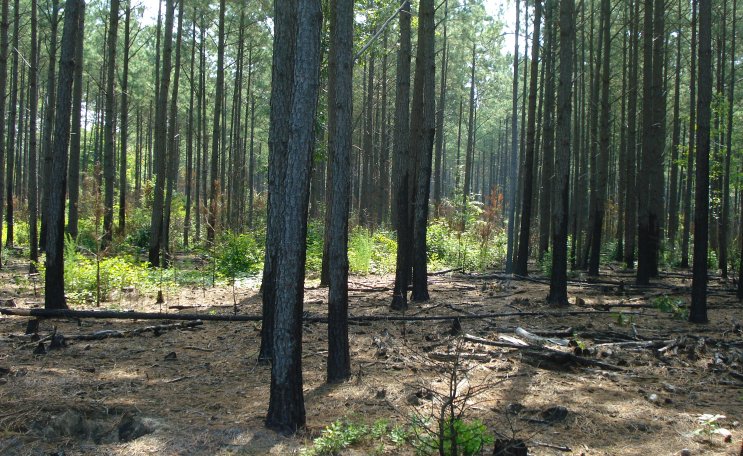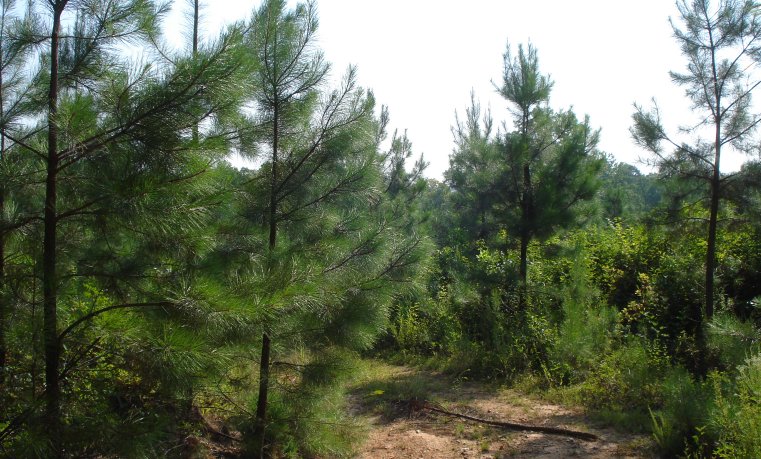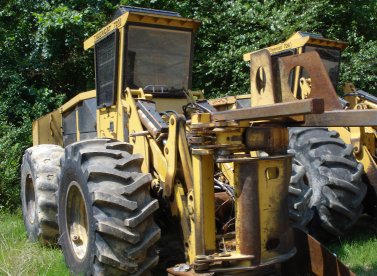Larry Walker, the guy in charge of the hunt club on our CP land, took me around to some forestry work sites, where they had recently thinned or done controlled burns. I learn a lot from looking at how different approaches produce different results.

Even a very severe thinning grows back in a couple of years. Larry thinks it is better to thin early, since that releases the better trees to grow faster and concentrates resources on the stronger trees. Prices for pulp are low right now, so many landowners are putting off thinning operations, but they shouldn’t wait too long. In Southside VA, you can probably thin at fifteen years and it is a mistake to wait beyond eighteen years. If you miss that window, your trees are stunted and more vulnerable to disease and bugs. In other words, it makes sense to thin even if you aren’t making money on that particular transaction.

Larry’s son Dale runs the thinning cutter and Larry thinks he is a virtuoso. You have to cut rows in the trees to get the machines through, but after that a good thinner can take out the inferior trees, the ones that are small, twisted or have multiple stems. he newly thinned forest is in some danger the next year from ice storms, since they grew up leaning on each other. It is best to thin early in the season if you can, but it is not always possible to arrange and/or spring rains and mud can make it impossible for equipment to properly function. You can do a winter burn the year after that and then apply biosolids, followed by a summer burn to take out the competing hardwoods. With any luck, you can do the second thinning at twenty-two years.

Larry told me that there are more trees growing in Brunswick County now than any time he can recall. Many of the old fields that used to grow tobacco are now planted in trees. That is good, since you need a density of forestry operations to support the saw mills, which support the forestry operations. It is a symbiosis.
I am really lucky to have the hunt clubs on both my forest properties. They protect my land, maintain the roads and signs and give me good advice. We have a convergence of interests. We all want a healthy habitat. These guys and their families have been hunting on these lands for generations.
We have more of a partnership and sometimes I think I am the junior partner. They have more history with it than I do and they make improvements. For example, the guys on the Freeman property planted some soy beans for the deer to eat and Larry promise to make an herbaceous corridor down to the creek, which will feed the wildlife and make it possible for me to get to the creek overlook w/o getting torn to pieces by the brambles.
